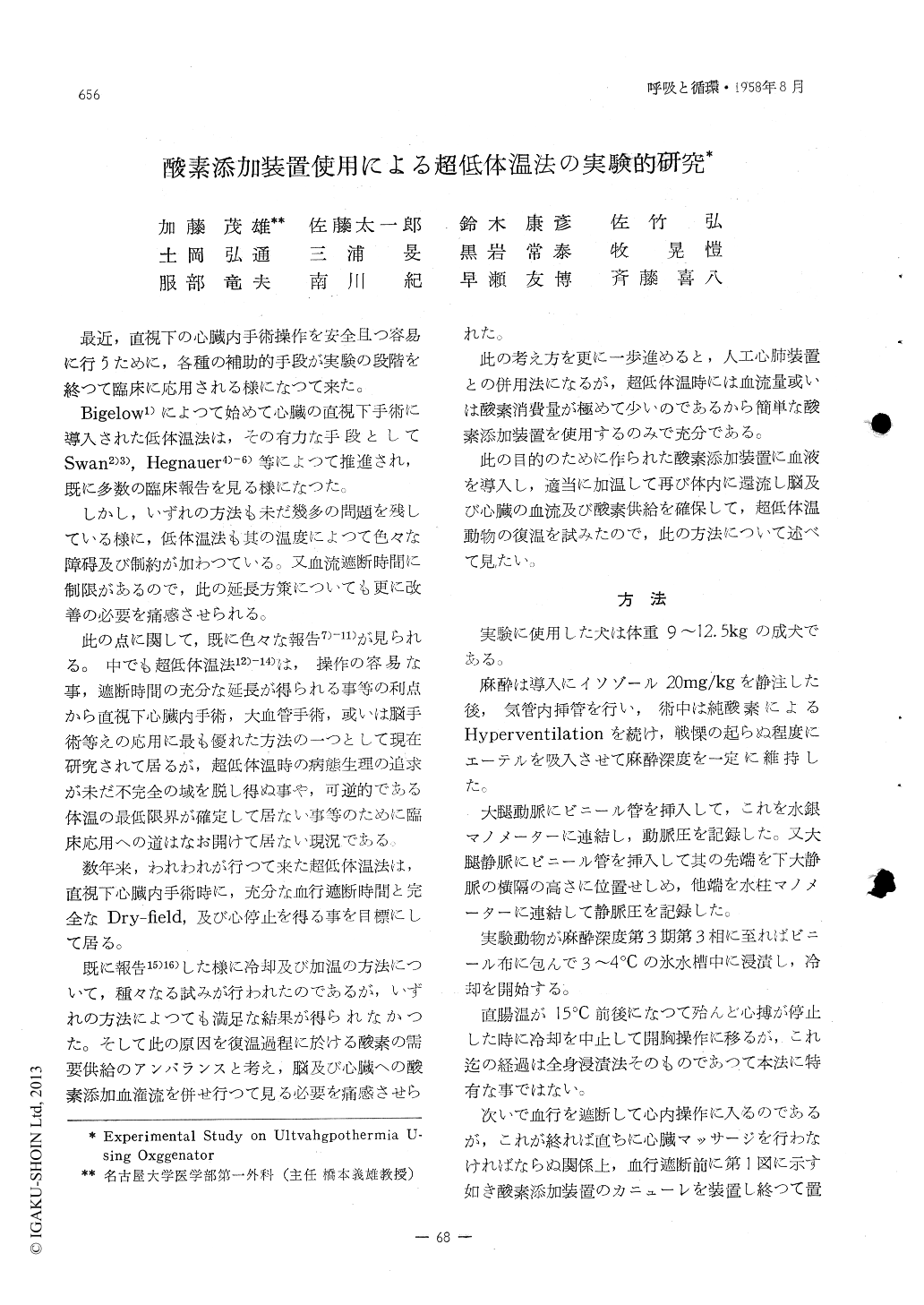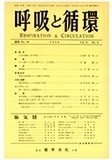Japanese
English
- 有料閲覧
- Abstract 文献概要
- 1ページ目 Look Inside
最近,直視下の心臓内手術操作を安全且つ容易に行うために,各種の補助的手段が実験の段階を終つて臨床に応用される様になつて来た。
Bigelow1)によつて始めて心臓の直視下手術に導入された低体温法は,その有力な手段としてSwan2)3), Hegnauer4)−6)等によつて推進され,既に多数の臨床報告を見る様になつた。
AN EXPERIMENTAL STUDY ON THEREWARMING FROM THE PROFOUND HYPOTHERMIA BY THE USE OF A SIMPLE OXYGENATOR
In the experiment of profound hypothermia for the open cardiac surgery, a Simple oxygenator was designed and employed inorder to recover the deep hypothermic dog, combining with immersion rew-arming.
The immersion rewarming causes the slack of superficial blood vessels. resulting to the discrepancy between oxygen demand and supply and to the anoxia of such important organs as brain and heart, and consequently the animal can not recover from the extremely low boody temperature.
Our experiments has started form the purpose of maintaining enough circulation in these organs to prevent anoxia by the employment of a simple oxygenator for rewarming.
The experiments was performed as follows;
Intracardiac surgery was performed under the hypothermia of 15℃, induced by immersion cooling method. As soon as the cardiac occlusion was released, the venous blood was suctioned out into the oxygenator and was warmed up to about 42℃ and then sent back to the ascending aorta. We also used the immersion rewarming inorder to obtain rapid recovery. When the rectal temperature reached to 30℃ the oxygenator was discontinued and the immersion rewarming alone was employed until 36゚C. The fibrillation of heart was ceased spontaneously or by electroshock at 20゚ to 27℃ of rectal temperature.
The results of the experiments were as follows:
1) The anoxia of brain and heart cauld be avoided by a simple oxygenator which we deviced.
2) Spontanously defibrillatoin occurred so frequently in early stage of rewarming process in this series that cardiac massage was not necessary for a long period and accordingly cardiac damage was scarcely recongnized.

Copyright © 1958, Igaku-Shoin Ltd. All rights reserved.


